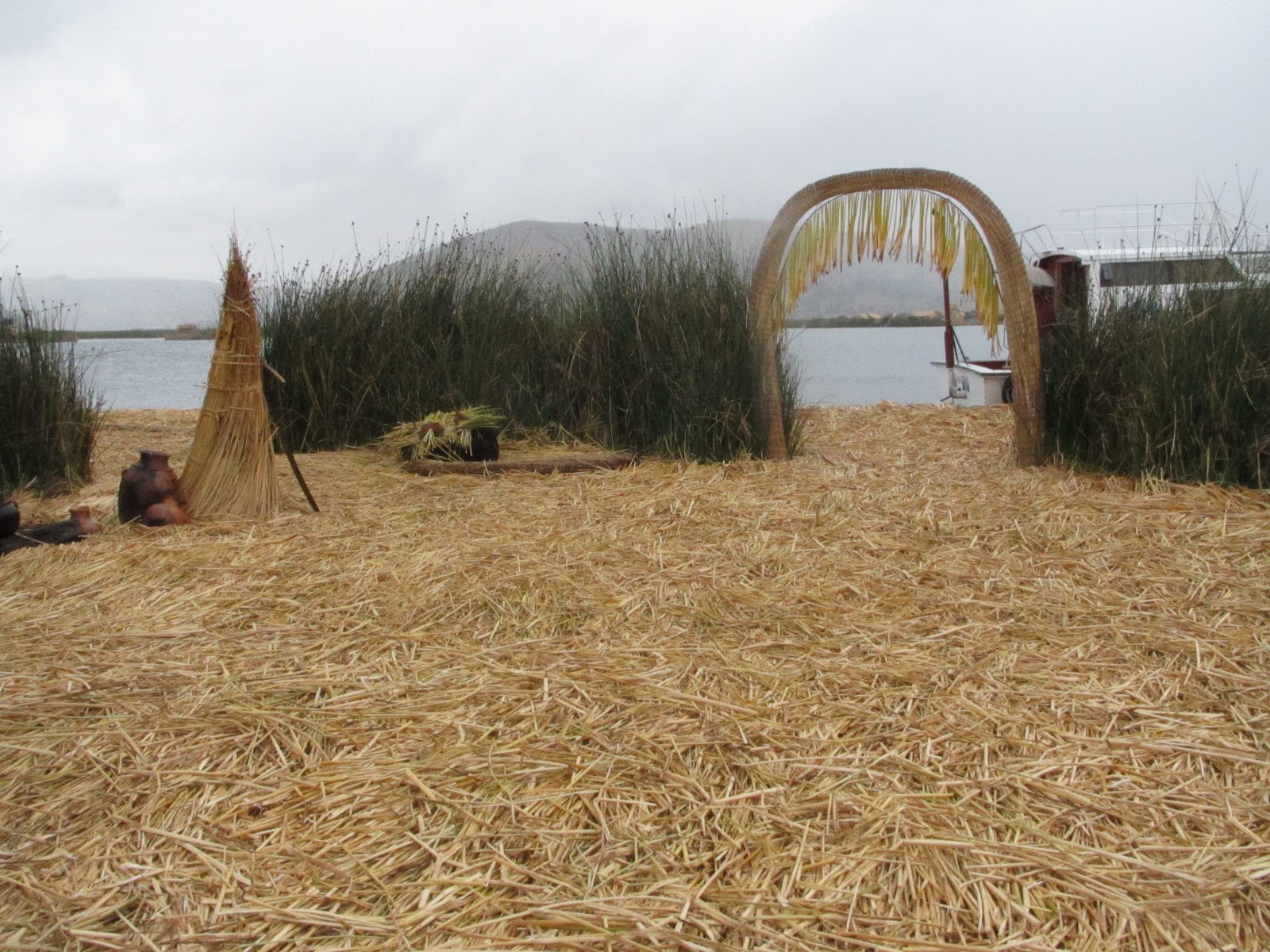We're back from Titicaca, and to very pleasing election results. Yay for America in so many ways!
The 300km bus ride from Arequipa to Puno (Peruvian town on the shores of Lake
Titicaca) is 6 hours of beautiful arid high desert,
with lots of
alpacas, vicunas, and sheep, and a few people and a few little towns. Photos from the bus window, sorry.
 |
| The little white spots are a mix of sheep and alpacas. |
The lake is 3810m, the highest navigable (by commercial boats) lake in the world. BTW, Beavis and Butthead have done a lasting disservice to Lake
Titicaca; our guide was quick to point out that the pronunciation
involves a guttural rendition of "caca", (kkkhakkkha) not the soft way
we always say it, which, as everyone knows means "poo" in Spanish. The lake's name
actually translates to gray puma (a sacred cat). Locals who know some English are a little defensive about this.
 |
| The very clay-colored town of Puno, on the shores of Lake Titicaca. |
Our first night on the lake we stayed on the Yavari, a steamship that
was commissioned by the Peruvian government in the 1860s. Made in Great Britain, it and a sister ship were
manufactured there into 2267 pieces, shipped in crates across the waters
(Atlantic to Cape Horn up the Pacific), then put on a train in Peru,
then transported by mules across the Andes, a trip that took 6 years to get all the pieces to Puno.
They were finally assembled at the lake and put to work, using llama dung
as fuel. The ships had 100+ years working. Now the Yavari has
been restored, functioning now as a B&B until it can get the $800K
needed to restore it to full steaming, navigable function.
 |
| The Yavari (see more at yavari.org, if you're interested) |
 |
| Original tools. |
 |
| The engine. |
 |
| Overnight guests with La Capitan Giselle (on the right). |
 |
| Our berths. |
 |
| The head. |
  |
| These little as yet unidentified critters, about guinea pig size, lived on the shore near the Yavari. |
The next morning we got on a boat and rode out to the Uros, the floating islands for which Titicaca is so famous. They are made of totora reeds and roots bound together (nowadays they use empty plastic bottles as well), good for about 20 years, and are bouncy in the way you'd expect. Kind of like walking on a trampoline or on a quaking bog. It's a big, big tourist business for the folks who live on the islands, nonetheless, one gets a sense of what life is/was like.
 |
| The totora reeds, rooted down about 3-4 meters, and growing about 3 meters above the water. |
 |
| The ladies awaiting a tourist boat's arrival. |
 |
| Steve in necessary rain gear, near some reeds in place for show, and near a reed home. |
 |
| Each island village had an archway entrance. |
 |
| A cookstove, on a base of nonflammable totora roots. Fire gets lit in the little space under those pots on top. |
 |
| Looking across to another nearby island. |
 |
| They still construct these reed boats (also with an element of plastic bottle core), but they're used only for tourists. They use little motor boats to get around. |
 |
| In back of a house. |
Tomorrow, the islands of Amantani (including our stay with a family there) and the island of Taquile.






















No comments:
Post a Comment